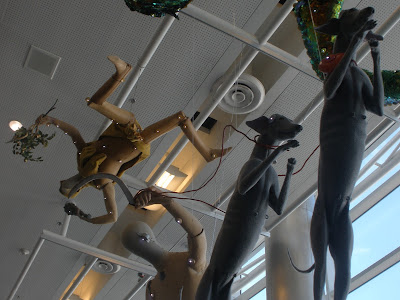Leo Major
the Greater Lion
from
You Are Here
You Are Here
" The figure of Leo, very much as we now have it, appears in all the Indian and Egyptian zodiacs, and of all the zodiac constellations it is probably most famous. As many authorities claim, its prominence is beyond question due to the fact that the place of the sun at the summer solstice was in this constellation at the time that the star groups were designed. There was thus a visible connection between the constellation Leo and the return of the sun to place of power and glory at the apex of the heavenly arch.
The connection between the sun, king of the heavenly hosts, and the lion, king of beasts, is obvious. Macrobius says:"This beast seems to derive his own nature from the luminary [the sun], being in force and heat as superior to all other animals, as the sun is to the stars." The Lion is always seen with his eyes wide open, and full of fire.
According to Greek fable, this Lion represents the formidable animal which infested the forest of Nemaea. It was slain by Hercules, his first labour, and placed by Jupiter among the stars in commemoration of the dreadful conflict.
Hercules (see blog entry December 10, 2015) is generally represented as wearing the lion's skin, and he is said to have reclined as he awatied his doom on the funeral pyre. Some aver that Hercules strangled the lion with his hands, but according to another legend he seized the lion by its jaws, and drove his heavy club down the creature's throat.
Maunder points out a curious relationship between four of the zodiacal constellations, one of which is Leo. He says: "The four most important signs of the zodiac are those in which the sun is located on the longest and shortest days, and on the two days when the days and nights are of equal length. These four signs in the days of Noah were the Bull, the Lion, the Scorpion and the Water-Pourer."
from Star Lore by William Tyler Olcott
Follow this link to see images of the making of Leo the Lion
(like below)
Click on the Leo icon in the side menu























